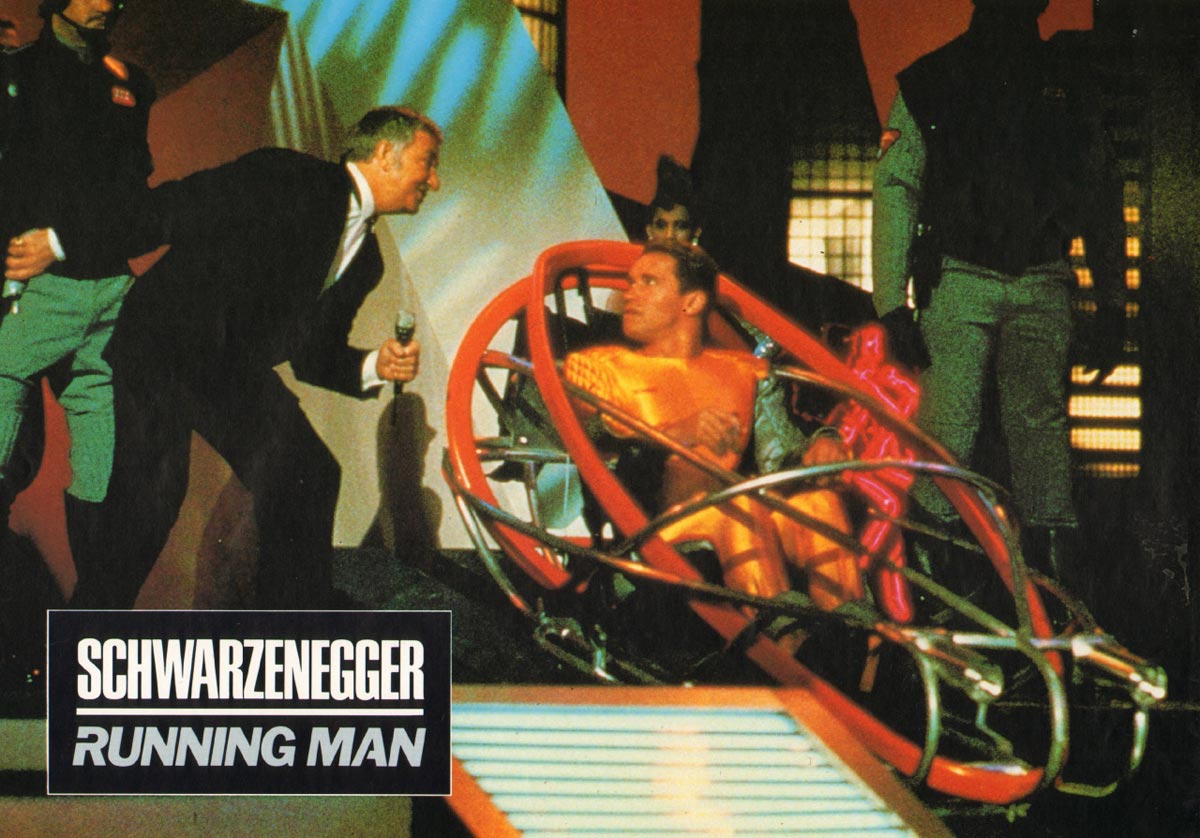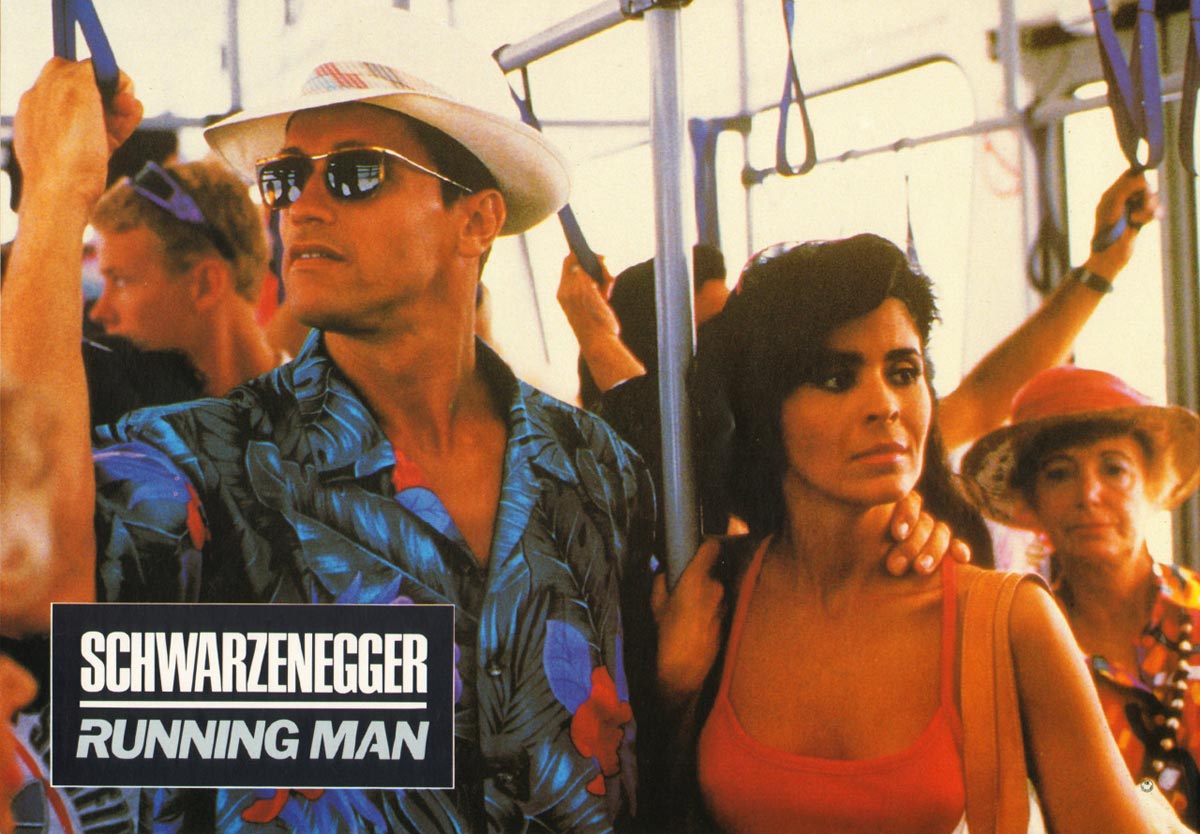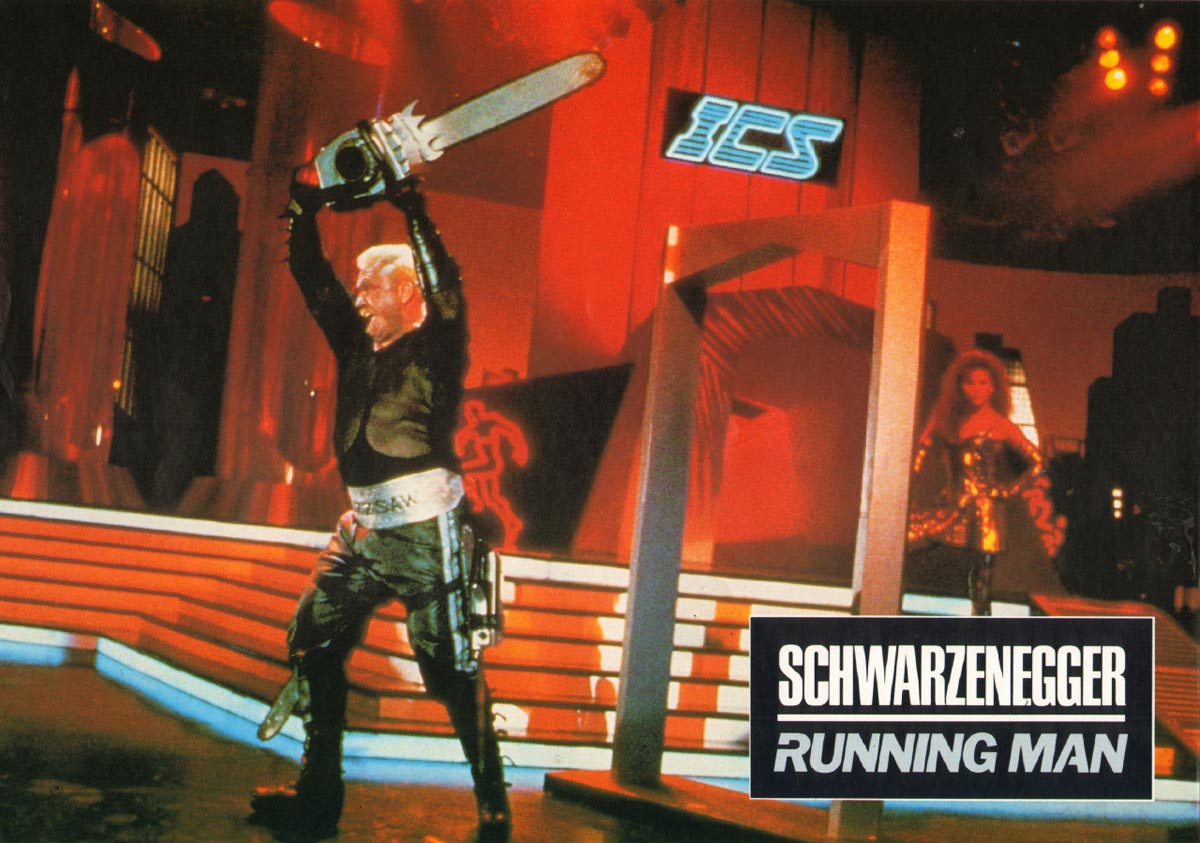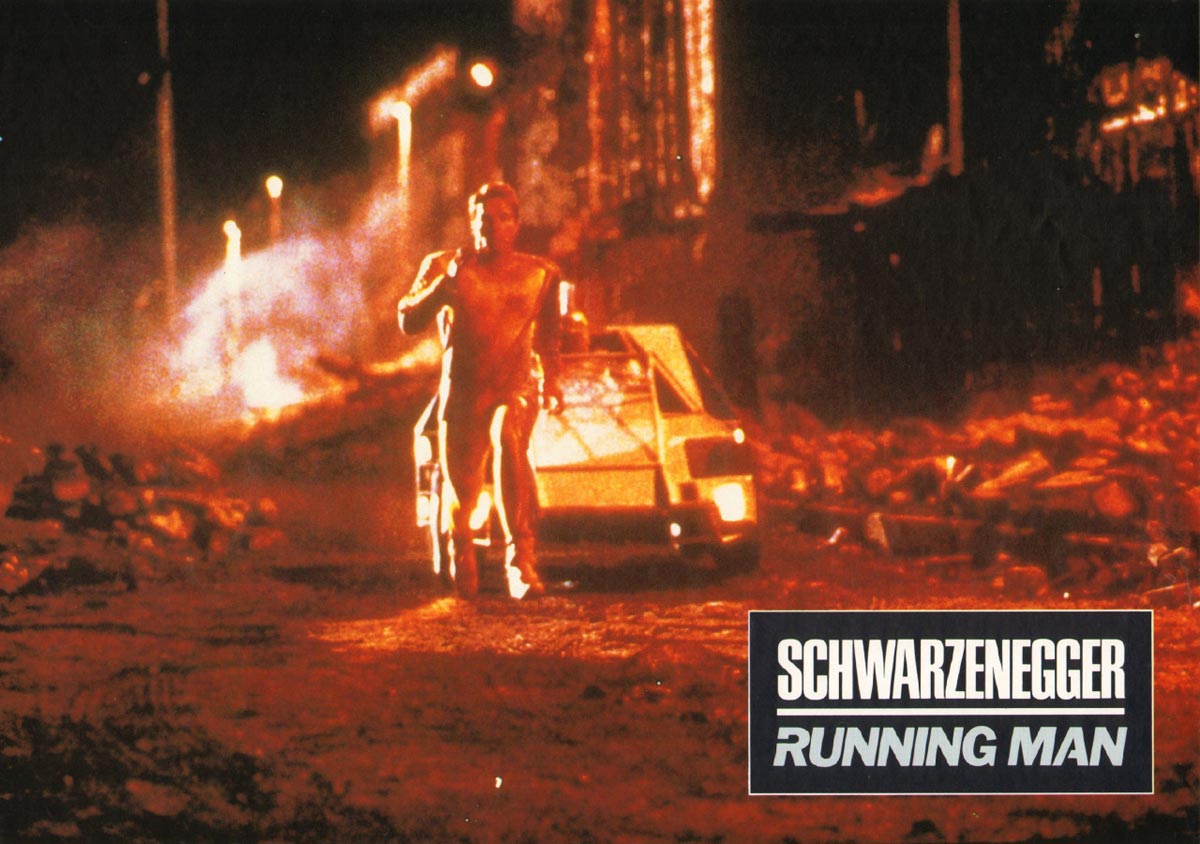It’s perfectly appropriate that Paul Michael Glaser’s 1987 film The Running Man (playing at the New Beverly on Friday, July 28th, as a double feature with Total Recall) should open in the year 2017. The Running Man envisioned a dark, media-obsessed future wherein the people are deeply addicted to the new screen-based opiate of the masses, the police control the country, and all hints of subversion are carefully manipulated by the media. In 2017, we contend with cries of fake news, media manipulation has only become more savvy, and people are more and more plugged into meaningless reality shows. The Running Man, based on a Stephen King novel (under the pen name Richard Bachman), was released in the era of Ronald Reagan, but given its cultural commentary, too easily plays in the era of Donald Trump.

To offer a broad generalization, Reagan’s era was the era of over-commercialized mass media. In 1980, we began the era of the supra-blockbuster in earnest (as broken open by films like Star Wars and Jaws a few years earlier), and films became more and more acceptable for broader and broader audiences. What’s more, the president had also revoked several media-controlling government measures (i.e., the Fairness Doctrine) allowing media companies to sell their product more heavily to new markets (it used to be illegal to market products to kids, for example). There was plenty of meaningful work coming out of the 1980s, of course, but the general focus of the decade often felt bottom-line rather than high art.
One can easily say the same thing about film in 2017. Every major blockbuster is a super-commercial, PG-13-rated, effects driven laser light show with bright costumes and recognizable childhood characters. Film series are planned out years in advance, and casual audiences use the word “franchise” with distressing casualness. Our need to be eternally distracted by our mass media – to devote ourselves to TV culture – was huge in the 1950s, it was huge in the 1980s, and it’s huge now.

Which is perhaps the main reason The Running Man is so timely. With a screenplay by the well-known and celebrated blockbuster author Steven E. de Souza, it’s a refreshingly rebellious film that dares to take down the media from the inside. The media is controlling you, and you need to wake up. The Running Man would play wonderfully alongside other anti-media films of the era, notably They Live and Videodrome. It’s a film that looks at the current bloated, near-immoral state of super-distracted, media-influenced media, and offers a solution wherein a blue-collar everyman can topple in through wit, brute strength, and a persona sense of injustice.
The Running Man takes place in the future wherein convicted criminals are granted a pardon if they compete on “The Running Man,” a televised gladiator show wherein the contestants are hunted by professional killers. The killers each have a cute nickname and a funny gimmick. They are more or less WWF professional wrestlers. The show was created by a slimy producer/host named Killian, who is played by real-life game show host, the great Richard Dawson. Dawson was most certainly game, essentially playing a dark mirror version of himself. This game show is presented to audiences as a symbol of hope in dark times. Even if you were convicted, you might have a second chance. Although it also very clearly caters to a base bloodlust in the audience constructing lurid melodramas around the contestants. It’s like an episode of Chopped, but with murder instead of mystery ingredients.

Arnold Schwarzenegger plays the lead character, an everyman cop named Ben Richards who is wrongly accused of a massacre, and who finds himself snagged into competing on “The Running Man.” I find it eternally amusing how often 1980s Schwarzenegger, a gigantic wad of muscle with an inscrutable accent, was asked to play regular Joes with bland all-American names. Alan Schaeffer, John Kimble, John Matrix, Jules Benedict, Douglas Quaid. None of these names sound Austrian to me. And Schwarzenegger never once struck me as a regular, blue-collar fellow, no matter how hard any script insisted he was. He was clearly cast as a power fantasy figure – something aspirational – for a blue-collar American audience. Is it perhaps ironic that 1980s America’s go-to superman was not American?
It’s been said that an effective satire must also function as the thing it is satirizing, and The Running Man, while underhandedly satirical, can also be enjoyed on its most superficial levels. For all its commentary on the bleak extremities of 1980s American media, The Running Man is no essay or polemic or tut-tutting shame-fest. It functions perfectly well as a revenge fantasy. Against the media who would control you, against corporate corruption, and against that one smarmy game show host you secretly hate for reasons you can’t quite discern – Dawson was brave in being the avatar for such a figure. The film’s politics, while openly present, heartily take a back seat to Glaser’s own near-irresponsible sense of wham-bam action, and Schwarzenegger’s own inimitable screen presence.

As such, The Running Man is one of those rare films that manages to have its cake and eat it too. It condemns violence while celebrating it. Violence, the film argues, is perhaps a negative thing, but it’s also careful to provide audiences with an unironic violent catharsis. When certain bad guys get their violent comeuppance, it’s o.k. to cheer a little bit. The Running Man may not quite have the same satirical heft of, say, RoboCop, but it’s certainly faced in the same direction.
The notion of using the hunting-people-as-entertainment is, of course, nothing new; It goes back to The Most Dangerous Game and lived right up through The Hunger Games (which owes its very life to The Running Man). But The Running Man is one of the more boldly, brashly, rudely, and excitingly entertaining versions of the story, and helped define an era when the media was being celebrated and sharply criticized at the same time. It’s 2017. It’s time to look again.


